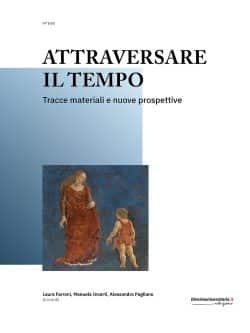Indice
This essay discusses and suggests to correct the communis opinio regarding the years in which the Franciscan Friars settled in Jerusalem in the XIVth century
The paper points out the historical interest of a special type of guides for pilgrims in the Holy Land, the Franciscan processionals dating back to fourteenth and fifteenth centuries.
Based on 9 Franciscans antipho-naries dating back to the years between 1431 and 1492, the article provides useful data for classification and dating of undated antiphonaries on the following places: Bethlehem, Mount Zion, Bethany, Mount Olivet, “Peregrinationes infra Ierusalem civitatem,” Valley of Jehoshaphat.
This article examines how Boiardo’s vernacular translation of the Pedìa de Cyro offers insight into the Count of Scandiano’s modus operandi: whilst being somewhere between the draft and polishing stage, the Boiardo text reveals various degrees of translation.
The vernacular translation presents a narrative far from the more dialogical structure of the original work and reproposed by Poggio Bracciolini in his translation. In fact, Boiardo’s work appears to be more light and free and places action at its core. Moreover, the presence of a number of entirely rewritten passages allows one to view the way in which Boiardo intervened on his Secretary’s translation, amplifying it in detail with a Boccaccio-like style, resulting in a more chivalrous tone. The Count of Scandiano’s Pedia de Cyro reveals his exposure to various kinds of classical narrative and provides some sense of the Ferrarese cultural setting in which experimentation with narrative was encouraged. In short, Boiardo attempts to fuse elements of the classical and vernacular tradition bringing together high and low culture in a narrative context. He also favors a more pathetic and moralizing tone rather than one of humor and wit present in Poggio’s translation of Xenophon’s Cyropaedia.
This essay analyses the results of the collaboration between scholars and publishers working on the Italian critical editions called Edizioni Nazionali, which partly benefit from public fundings. Moreover, this essay looks into the relationship between these scholarly editions and the national canon of literary authors in Italy.





